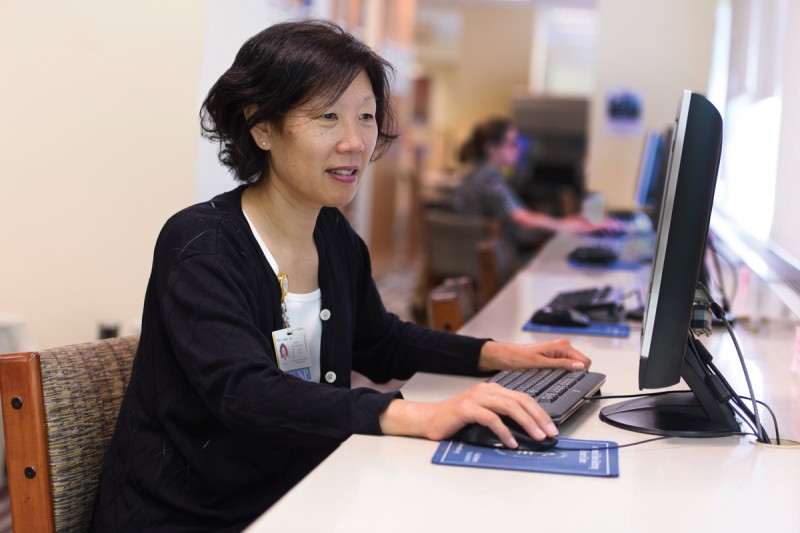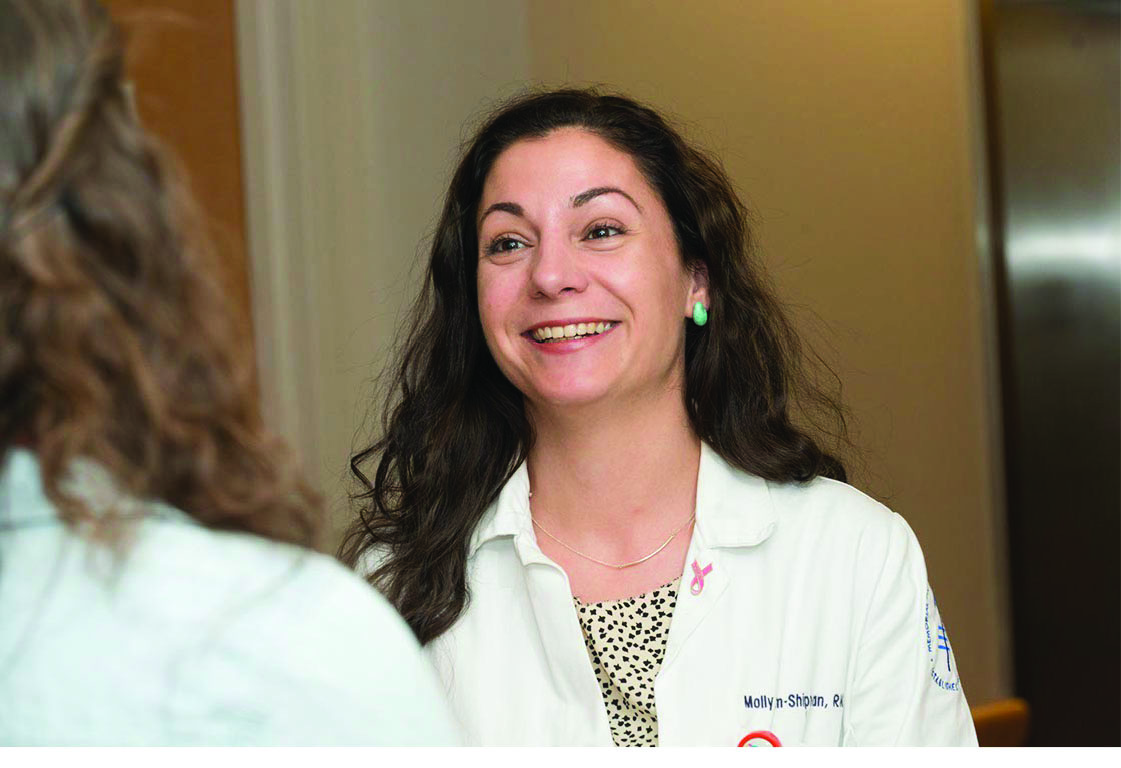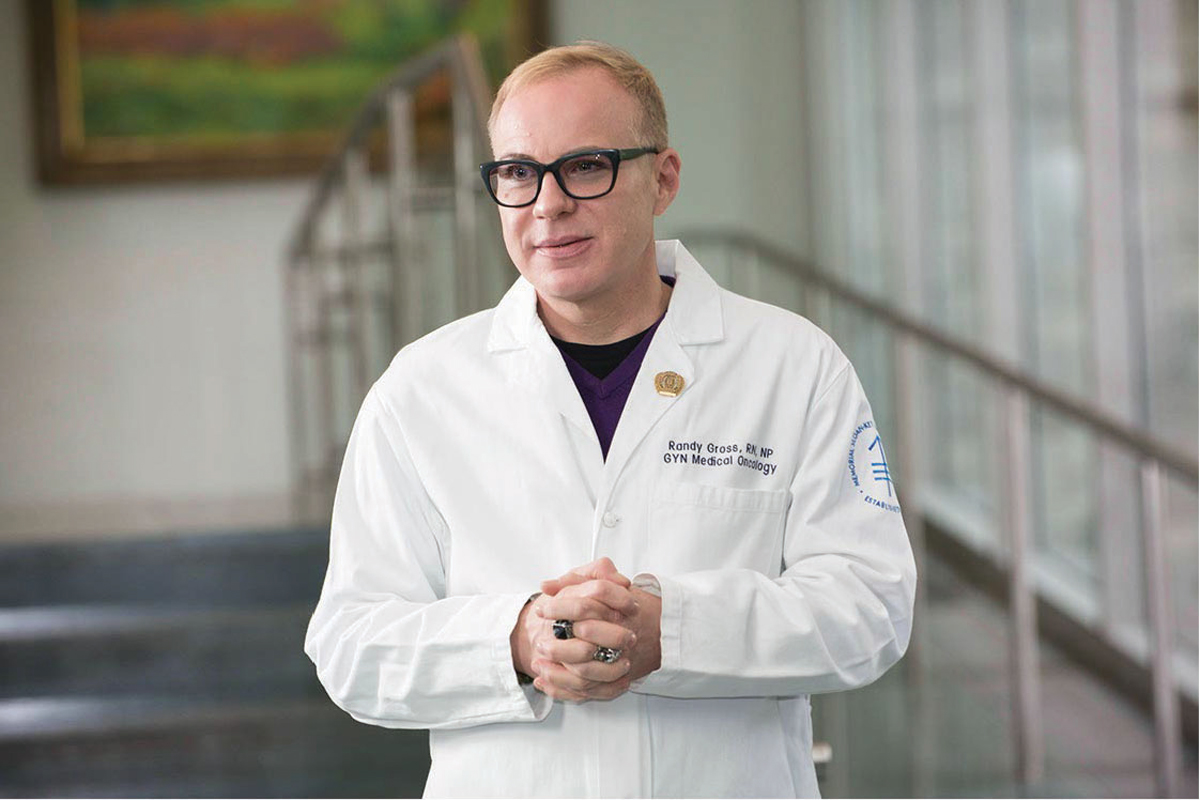
Caring for patients is, of course, at the heart of nursing. But at Memorial Sloan Kettering, many nurses are also scientists, conducting research that is improving cancer care both at MSK and beyond.
“As cancer becomes more of a chronic disease, quality-of-life issues become ever more important,” says Elizabeth McCormick, MSK’s Chief Nursing Officer. “Research projects that tackle those issues are vital.”
Nursing research has the benefit of bringing tangible change to patient care. “At the end of the day, when a nurse completes a successful research study and learns something about a practice change that would lead to better outcomes, we in turn adopt those practices here,” she adds.
Nurses are also closely involved in other projects that impact patient care. A team including several nurses worked closely on the development of processes adopted at the Josie Robertson Surgery Center, our new freestanding short-stay outpatient facility on Manhattan’s Upper East Side.
Michelle Burke, Nursing Director of Perioperative Services at MSK — along with surgeon William Hoskins, recently retired as MSK’s Executive Director of Surgical Activities — launched a pilot program called Ambulatory Extended Recovery (AXR) years before the facility opened. It looked at surgical patients who had brief hospital stays and who could potentially be moved to an outpatient recovery program that would get them home in 24 hours or less. They were required to achieve specific post-surgical milestones to see whether they could do well with the truncated timeline. The AXR pilot is now standard operating procedure at Josie Robertson.
Nursing research studies also go beyond improving patient care, extending to include ways to better the practice of nursing itself. “Nursing research is all about discovery, in so many areas,” says Margaret Barton-Burke, Director of Nursing Research and immediate past President of the Oncology Nursing Society, a 39,000-member international nursing specialty organization.
To learn more, we talked with three nurses leading research projects at MSK about their work.
Relieving a Painful Side Effect of Radiation Therapy

“My research is focused on patients who develop a skin reaction that’s much like a second-degree burn, where you basically lose the outside layer of the skin,” says Molly Olm-Shipman, an office practice registered nurse in the Department of Radiation Oncology. “It’s the result of a gradual, sunburn-like reaction that patients get during radiation treatment. In our study, patients applied either a steroid cream or a control cream starting on the first day of radiation treatment to prevent the side effect from developing.”
“These women are susceptible to all kinds of other issues. A lot of the time they’ve gone through chemotherapy, so they’re already fatigued and psychologically distressed because of side effects,” she adds. “Quality of life is really important for them, and every little bit begins to count.”
Ms. Olm-Shipman will be presenting her findings at the American Society for Radiation Oncology annual meeting this fall. “I hope to be able to provide a clear standard of care for prevention of this painful side effect,” she says. “The research we can do as nurses to contribute to the highest quality of care for our patients, while making things easier for patients themselves — that’s the golden goose.”
Helping Caregivers Help Themselves
Nurse practitioner Tammy Son’s background in caring for patients who’ve received bone marrow transplants (BMTs) has given her a unique perspective on the recovery process. “You form a very intimate relationship with patients and their families and learn so much about them as people due to how long they’re often in the hospital,” she says. “It’s a really unique bond.”
She was inspired by that closeness to find a way to help BMT patients’ caregivers deal with the stress of supporting their loved one. Her project is a two-phase study in which she’s creating support materials, including booklets and the potential for an online component, that they can use anytime they need some help. “It will be a resource with proactive things they can do to help cope with their stress either alone or with the patient, and information about challenges they might face,” she says.
“Caregivers of BMT patients are under a huge amount of stress — probably more so than any others,” she adds. “My goal is to give caregivers an arsenal of strategies they can implement whenever they need to, whether that’s at 3 in the morning when they can’t sleep, or when they have a question at any time of day.”
“It’s hard watching families suffer, and trying to figure out what’s best to alleviate that is so important to me.”
Breaking Down Harmful Stereotypes about Nurses

For nurse practitioner and clinical nurse specialist Randy Gross, his initial opinion of what would become his future career was influential on his choice of research topics. “I was never interested in nursing myself — my perception leaned toward the stereotype that nurses were mean,” he says.
But when he began pursuing his PhD in nursing at the City University of New York Graduate Center, he decided to try to understand more about those misconceptions of nurses.
As part of a course he was taking, he developed a way to measure stereotypes of nurses in undergraduate students that are an obstacle to the recruitment of potential new nurses to the nursing profession. “For women, it’s that nurses are angels of mercy, handmaidens of doctors, mean battle-ax types, or the ‘sexy nurse,’” he says. “For men, it’s that they’re not smart enough for medical school, they’re hypermasculinized womanizers, they’re the effeminate homosexual, or they’re creepy miscreants.”
He collected more than 300 surveys of undergraduate non-nursing students and is currently analyzing the data. “The hope is that the results will point us to marketing and rebranding strategies for nursing’s image,” he says. “By 2020, we will need 1.3 million new nurses to replace the 900,000 who are retiring. Ultimately, we need to attract more bright, warm, and competent young men and women to the profession.



